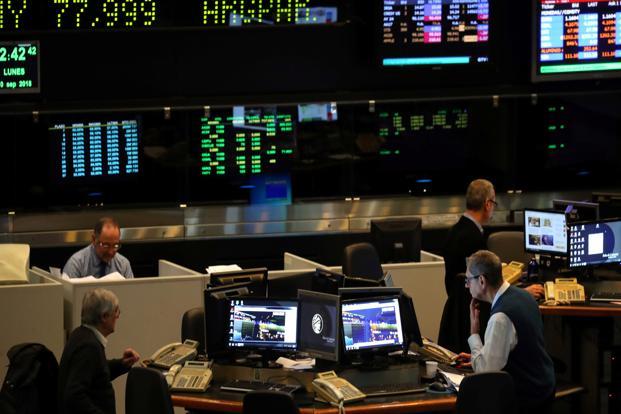Investors Struggle With Data Gaps as AI Valuation Fears Trigger Market Volatility
Markets face rising uncertainty as missing U.S. economic data, delayed policy clarity, and concerns over stretched AI stock valuations push investors toward caution.
Investors are navigating a growing sense of uncertainty as gaps in critical economic data create confusion across markets. The recent end of the U.S. government shutdown has left behind a significant information void that is unsettling traders. With key reports delayed or missing entirely, there is concern that policymakers may hesitate on rate cuts.
This comes at a time when anxiety around lofty AI stock valuations has already injected fresh volatility into equities and bonds. The Nasdaq, heavily weighted with AI-driven shares, saw its sharpest monthly decline in weeks.
After months of uninterrupted gains, the index now sits roughly 5% below its recent peak. Friday brought a modest recovery for global markets, but earlier selloffs highlighted the fragility of sentiment.
Major indices in Europe and Asia plunged in early trading, reflecting the spillover of U.S.-driven uncertainty. Even traditionally resilient assets such as gold and bitcoin were dragged lower, signaling broad risk aversion.
Corporate bond markets also saw credit spreads widen, suggesting heightened caution over future economic conditions. A major concern is the lack of reliable data that traders rely on to assess inflation, jobs, and demand.
The 43-day shutdown disrupted everything from crop estimates to futures positions and core labor statistics. Some of this information may never be released, leaving analysts without vital reference points.
The October inflation report is now uncertain, and the jobs data will miss the unemployment rate entirely. Without the household survey needed to calculate joblessness, markets lose a crucial indicator of economic health.
Federal Reserve Chair Jerome Powell recently compared this situation to “driving in the fog,” urging caution in policymaking. He signaled that missing data may slow the Fed’s pace, implying a pause rather than another rate cut.
Expectations for a December rate cut have slipped sharply, falling from near-certainty to roughly half-probability. This shift is adding pressure to stock valuations, particularly in sectors that rely on low interest rates.
Experts note that the market’s surge since April has left little room for disappointment. The S&P 500’s forward price-to-earnings ratio sits well above average, highlighting concerns that valuations may be overstretched.
Heavyweight tech and AI stocks have amplified these concerns, with some investors taking profits amid rising doubt. Companies such as Palantir and Oracle have posted steep declines, reflecting a broader cooling in AI enthusiasm.
Even major chipmaker Nvidia has lost ground ahead of earnings, heightening anticipation for its results next week. Analysts warn that any negative surprise from Nvidia could ripple across the entire technology sector.
Investor nerves were further shaken when Michael Burry announced the closure of his hedge fund. His warnings on extended depreciation schedules in tech have fueled skepticism about the sustainability of earnings.
Corporate debt markets are feeling the strain as well, with recent selloffs in major AI-linked bond issuances. Oracle’s debt, tied to the company’s massive AI infrastructure buildout, was hit particularly hard amid valuation concerns.
As traders head toward 2026 with limited economic visibility, many fear they are “flying blind” into the new year. The combination of missing data, high valuations, and fragile confidence is shaping a cautious market outlook. Investors are now reevaluating risk exposure, seeking clarity that may take months to fully restore


